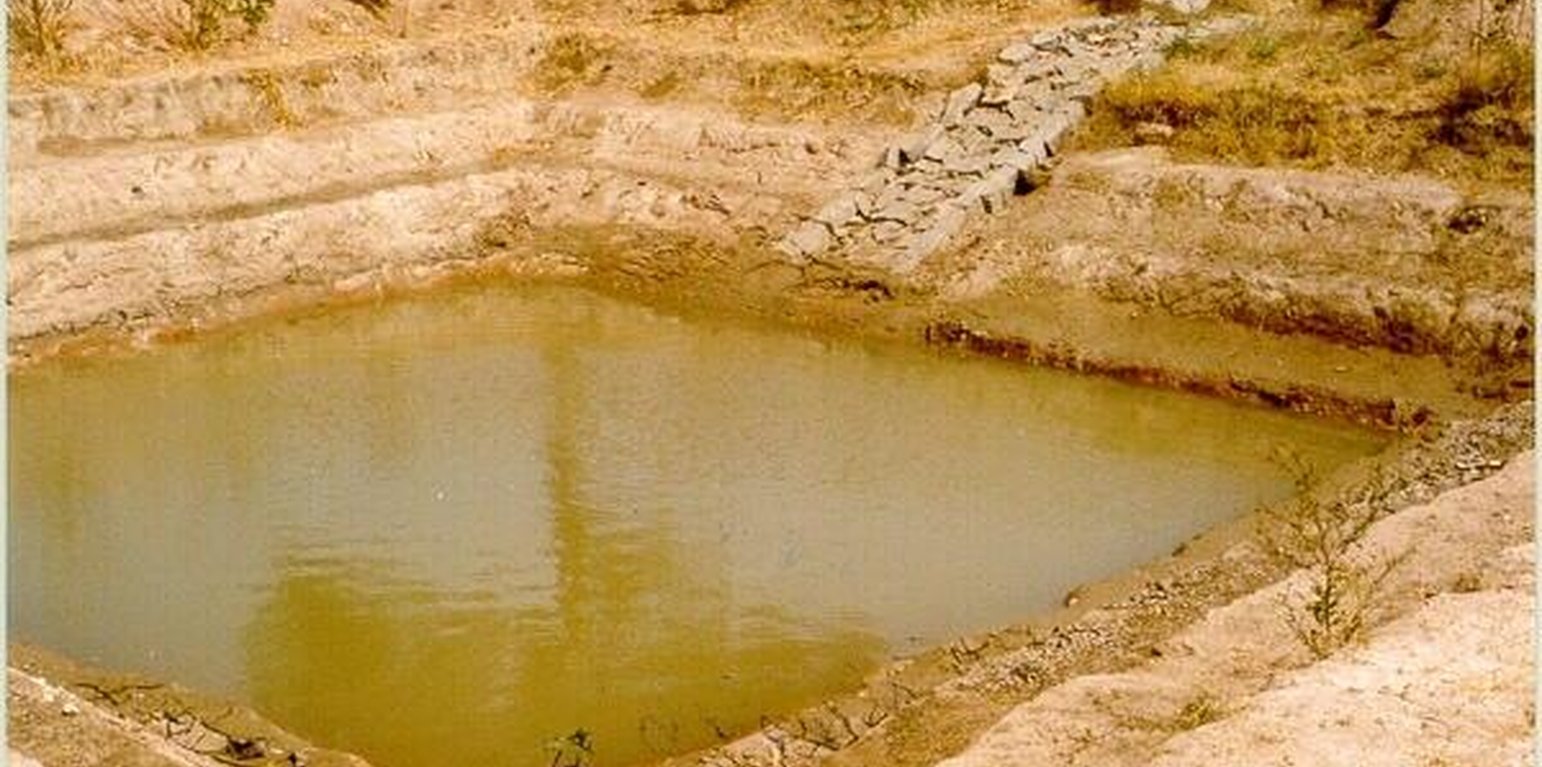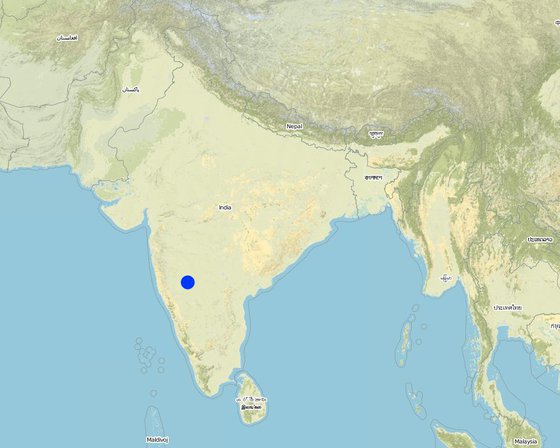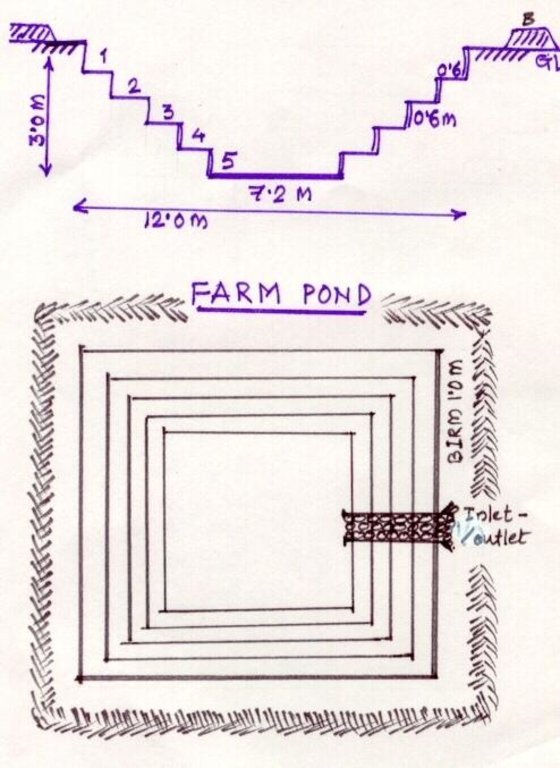



A farm pond comprises of excavated portions of 12 x 12 x 3 m with the steps at 0.6m depth each. The excavated earth is deposited all around the structure as a bund, with a burm space of 1m. An inlet cum outlet provided in the course of flow of rain water to collect and dispose the excess runoff.
Purpose of the Technology: (1). For storage of exess runoff. (2) to increase percolation for ground water recharge, (3). To use for protective irrigation during dry period, (4). To stop further deepening of watercourse in arable lands
Establishment / maintenance activities and inputs: Selection of beneficiary is by the community and site selection, Design/ layout and excavation by the project staff with participation of the beneficiary. Desilting of the structure is by the beneficiary
Natural / human environment: surrounding lands are more slopy and with exposed rocks, most of the surrounding area is left for grazing

สถานที่: Bijapur district, Hadalsang village, Karnataka, อินเดีย
ตำนวนการวิเคราะห์เทคโนโลยี:
การเผยแพร่ของเทคโนโลยี: กระจายไปอย่างสม่ำเสมอในพื้นที่ (0.028 km²)
In a permanently protected area?:
วันที่ในการดำเนินการ: น้อยกว่า 10 ปี (ไม่นานนี้)
ประเภทของการแนะนำ



| ปัจจัยนำเข้า | หน่วย | ปริมาณ | ค่าใช้จ่ายต่อหน่วย (Ruppes) | ค่าใช้จ่ายทั้งหมดต่อปัจจัยนำเข้า (Ruppes) | %ของค่าใช้จ่ายที่ก่อให้เกิดขึ้นโดยผู้ใช้ที่ดิน |
| แรงงาน | |||||
| Labour | ha | 1.0 | 360.0 | 360.0 | 10.0 |
| วัสดุสำหรับก่อสร้าง | |||||
| Stone | ha | 1.0 | 109.43 | 109.43 | 100.0 |
| ค่าใช้จ่ายทั้งหมดของการจัดตั้งเทคโนโลยี | 469.43 | ||||
| Total costs for establishment of the Technology in USD | 10.21 | ||||
| ปัจจัยนำเข้า | หน่วย | ปริมาณ | ค่าใช้จ่ายต่อหน่วย (Ruppes) | ค่าใช้จ่ายทั้งหมดต่อปัจจัยนำเข้า (Ruppes) | %ของค่าใช้จ่ายที่ก่อให้เกิดขึ้นโดยผู้ใช้ที่ดิน |
| แรงงาน | |||||
| Labour | ha | 1.0 | 7.3 | 7.3 | 100.0 |
| ค่าใช้จ่ายทั้งหมดของการบำรุงรักษาสภาพเทคโนโลยี | 7.3 | ||||
| Total costs for maintenance of the Technology in USD | 0.16 | ||||
Second crop also taken
From trees
From trees
Difference in the crop like on bunds and in the patches of crops.
15m x 15m land loss average land holding is very less, thus small & marginal farmers face reduction in the production area with this SWC
After implementing SWC less area is left for very small and marginal land holding.
Subsistance agriculture
To bring new area into cultivation
Water storage in farm pond